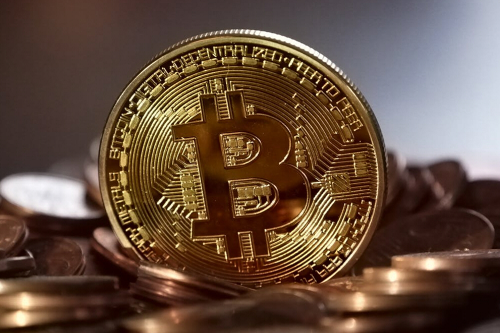Why It’s Time to Take Central Banks’ Digital Currencies Seriously
是时候认真考虑央行发行的数字货币了
·The introduction of central bank digital currencies could upend the global economic order.
·This technology could bring multiple benefits, such as more efficient trade, greater financial access for millions of people, and a reduction in crime.
·But there are still technological barriers to overcome, too.
·中央银行对数字货币的引入可能会颠覆全球经济秩序。
·这项技术可以带来多种好处,例如提高贸易效率,使数百万人拥有更多的金融渠道,并减少犯罪。
·但是,数字货币仍然存在技术障碍需要克服。
The decline of cash use in western economies has accelerated due to COVID-19. Meanwhile, central bank digital currencies are emerging, potentially upending the existing global economic hierarchy.
由于新冠病毒疫情,西方经济体减少现金使用的状态呈现出加速趋势。同时,央行数字货币正在兴起,有可能颠覆现有的全球经济体系。
Lockdowns limit physical interactions and naturally reduce physical cash use. But there also credible concerns that paper money can transmit the virus. Research has shown that the average European banknote plays host to around 26,000 colonies of bacteria. The human influenza virus can survive on a banknote for up to 17 days; with one-dollar and five-dollar bills changing hands more than 100 times per year on average, the risk during a global pandemic is considerable.
封城措施限制了人们的物理互动,自然减少了现金的使用——当然,人们也有自己的担忧,那就是这种病毒会经纸币传播。研究表明,平均每张欧元可寄宿约26000个细菌菌落。人类流感病毒可以在钞票上存活长达17天;每年一美元和五美元的钞票平均易手100次以上,因此全球疫情大流行期间使用现金的风险相当之大。
Who then can blame the People’s Bank of China (PBOC) when it announced in February that it would be destroying cash collected in high-risk environments, such as public transport, markets or in hospitals?
在这样的环境之下,又有谁能指责中国人民银行在2月宣布销毁在高风险环境(如公共交通,市场或医院)中收集回来的现金呢?
In concert with this decision, the PBOC also ramped up its plans to replace cash with a central bank digital currency (CBDC) – the e-RMB. In April, testing began for the e-RMB in several major cities, including Shenzhen, Suzhou, Chengdu, and a new area south of Beijing called Xiong’an. According to state media, the e-RMB has been formally adopted in these cities, with some government employees receiving salaries in the digital currency as early as May. The expectation is that these pilots will extend to the venue for the 2022 Beijing Winter Olympics.
基于同样的考虑,中国人民银行还加大力度,推进使用中央银行数字货币(CBDC)替代现金的计划,即电子人民币。四月份月,中国开始在包括深圳、苏州、成都以及北京以南的雄安新区在内的几个主要城市进行电子人民币的测试。据官方媒体报道,这些城市已经正式采用了电子人民币,一些政府雇员早在5月就开始接受数字货币的工资。中国期望将数字人民币的试点扩展到2022年北京冬季奥运会的举办地。
China is not alone. Deutsche Bank Research has tracked almost 20 digital currency projects led by central banks across all regions globally. Meanwhile, the private banking sector has also launched multiple initiatives, such as the R3 consortium, or in India, the Blockchain Infrastructure Company.
中国不是唯一一个先行试验国家。德意志银行跟踪研究了全球各地所有由中央银行牵头的近20个数字货币项目。同时,私人银行业也发起了多项测试计划,例如R3财团以及印度的区块链基础设施公司。
The aim for most of these initiatives is efficiency and effectiveness. Digital currencies could remove the cumbersome operational and security apparatus which surround conventional forms of money transmission. Reducing the ‘cost of friction’ can help financial inclusion of individuals, while also making global trade more efficient and less risky. Increasing transparency and traceability can protect against money laundering and other forms of financial crime.
这些举措中的大多数都旨在提升经济的效率和效力。数字货币可以消除围绕传统货币运输的繁琐操作和安全装置。减少“摩擦成本”可以帮助实现金融包容,同时也可以提高全球贸易的效率、降低风险。增加透明度和可追溯性可以防止洗钱和其他形式的金融犯罪。
For central banks, the most important benefit is the ability to improve regulatory compliance and the effectiveness of monetary policy. This is particularly important now. It’s difficult, if not impossible, to know if or when monetary policy is having the intended effect on the economy. If such stimuli were executed through a central bank digital currency, its flow through the economy could be monitored precisely, informing future monetary actions.

对于中央银行而言,最重要的好处是能够提高监管合规性和货币政策的有效性。此时此刻,这点显得尤为重要。目前,人们很难甚至不可能知道货币政策是否或何时会对经济产生预期的影响。如果通过中央银行数字货币执行此类刺激政策,则可以精确监控其在经济中的流动,从而为未来的货币行动提供依据。
There are political and social benefits as well. As research by Deutsche Bank shows, first movers in this space could win long-term geopolitical advantage. The potential for China here is immense. If the e-RMB is adopted broadly as a system to streamline trade and reduce risk, China could become the world’s trade banker, as well as its factory. Yet the bigger goal for China is actually more local, and relates to financial inclusion. Digitising the RMB will grant access to financial services to hundreds of millions of citizens, including some of the most disadvantaged. This benefit is something that can be applied to any country across the world.
由央行发行的数字货币也有其政治和社会利益。德意志银行的研究表明,这一领域的先行者可以赢得长期的地缘政治优势,中国在这一方面潜力巨大。如果电子人民币被广泛用作简化贸易和降低风险的系统,那么中国可能会在世界贸易工厂的基础上,成为世界贸易银行。但实际上中国的目标更多是本地化的,与金融普惠有关。人民币数字化将为数亿公民(其中包括一些弱势群体)提供金融服务机会。这种优势对于世界上任何国家都成立。
That said, significant technical and structural barriers must be overcome before any CBDC becomes reality. Described as a ’tri-lemma’, the challenge is that the underlying blockchain architecture of many cryptocurrencies can be designed to be highly decentralized, secure or scalable – but not all three at the same time. Scalability and security are crucial to the effectiveness of any CBDC, but losing decentralization risks creating other bottlenecks and inefficiencies.
需要注意的是,在任何中央银行数字货币成为现实之前,必须克服重大的技术和结构障碍。区块链作为数字货币的底层技术有着“不可能三角”的限制——去中心化、安全性及可扩性三者不可得兼。可拓展性和安全性对于任何中央银行数字货币的有效性都是至关重要的,但是去中心化的风险会形成其他瓶颈,并导致效率低下。
These technical challenges are being addressed by companies such as Infosys, along with many partners in the financial and technology industry. What is clear is that any solution needs to be at once fast, cheap, energy efficient and unbreakable. Privacy and identity must be dealt in a way that is acceptable to governments, citizens and corporations. We need enough transparency to enable the hoped-for leaps forward in efficiency and effectiveness, while still protecting individual and corporate rights to privacy.
Infosys等公司以及金融和技术行业的许多合作伙伴正在致力解决这些技术挑战。显而易见的是,任何解决方案都必须同时具有快速、成本低廉、节能与不受中断的能力。隐私和身份必须以政府、公民和公司可以接受的方式处理。我们需要足够的透明度,以实现预期的效率和效果飞跃,同时仍要保护个人和公司的隐私权。
This is a tall order – but in a world where digitalization is already transforming our lives, it is by no means impossible. If the last century has taught us anything, it’s not to underestimate the transformative potential of technological innovation.
这是一个艰巨的任务——但是在一个数字化已经改变了我们生活的世界中,这绝非不可能之事。如果上个世纪的历史对我们有任何启发,那就不要低估技术创新的变革潜力。
Important questions remain. How do we manage the disruption a CBDC could create by replicating, and potentially cannibalising, the current banking structure? What if some countries migrate to a CBDC and others don’t? What new power imbalances may result?
重要的问题仍然存在。我们如何推测并控制中央银行数字货币对于银行结构可能造成的破坏——比如替代或是摧毁?如果某些国家引进了中央银行数字货币,而其他国家没有,那该怎么办?会导致怎样的新失衡?
The answers are not straightforward, yet the opportunities to strengthen fiscal management, transparency, and efficiency are significant. What is clear is that the crisis of COVID-19 presents many challenges – but also a unique opportunity to rethink how money is managed and used in our society.
答案并不简单,但是加强财政管理、透明度和效率的机会是巨大的。显而易见的是,新冠病毒危机带来了许多挑战,但同时也是重新思考我们社会如何管理和使用资金的机会窗口。
英文、中文版本下载:http://www.yingyushijie.com/shop/source/detail/id/2425.html








